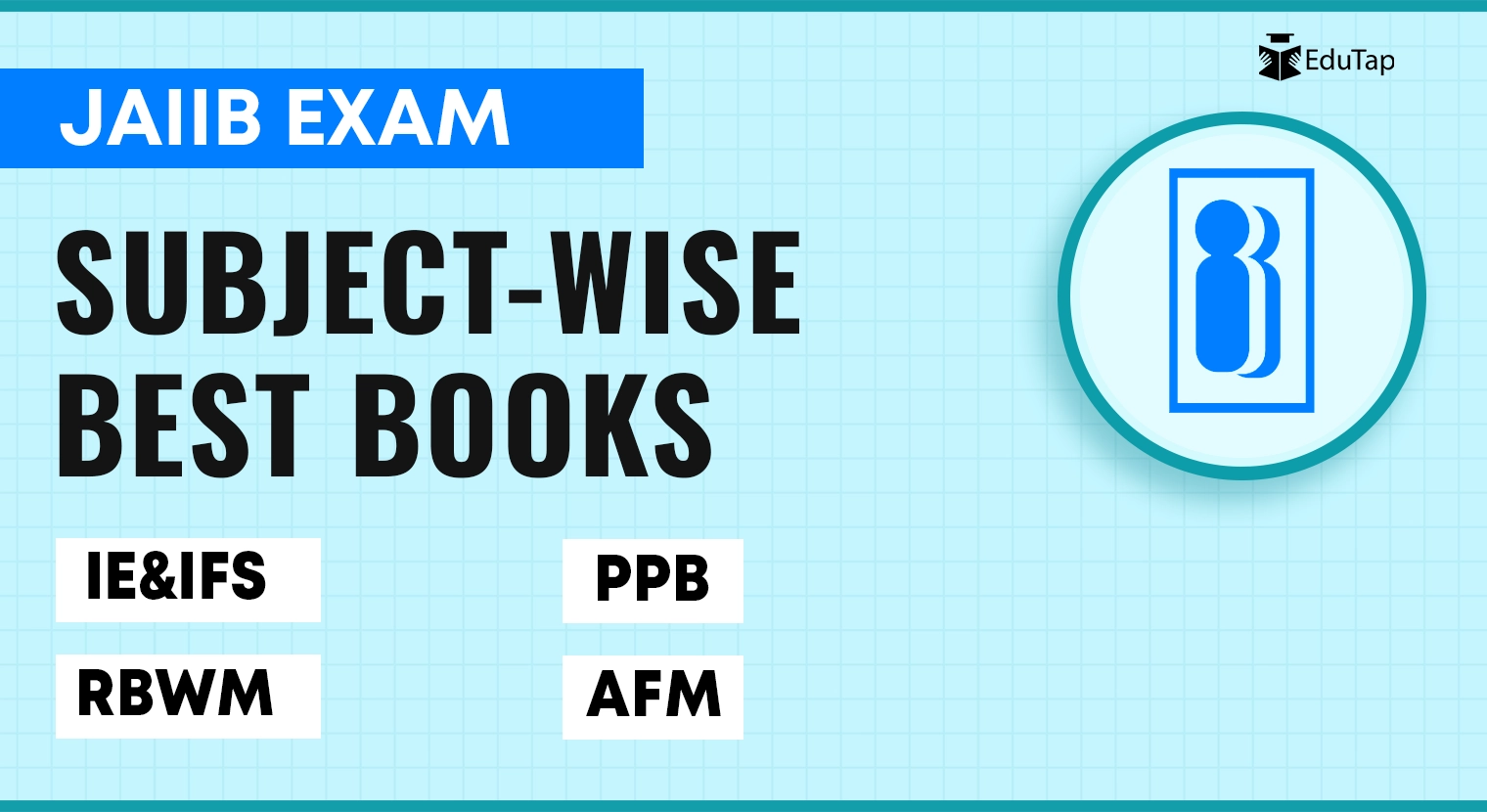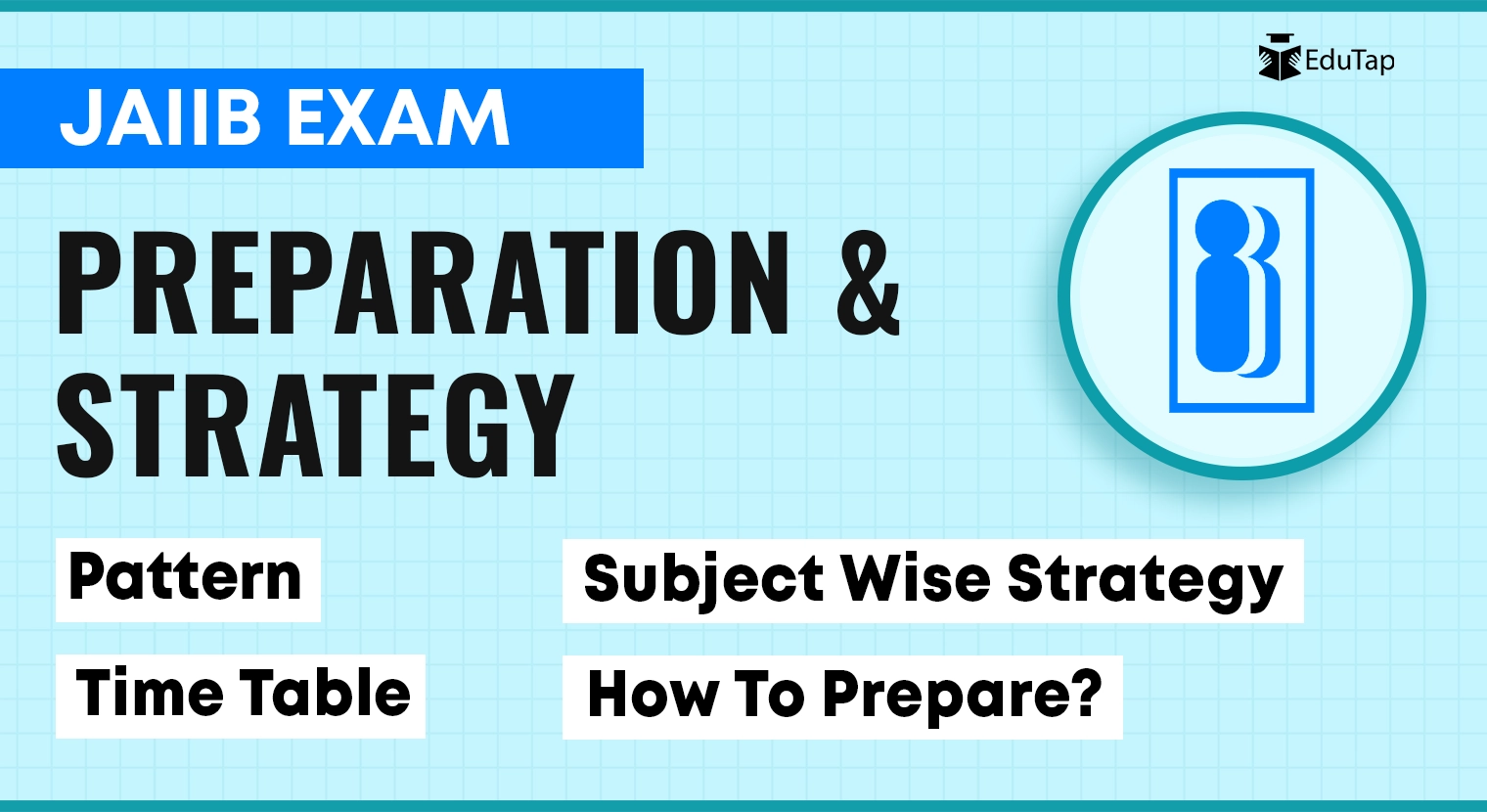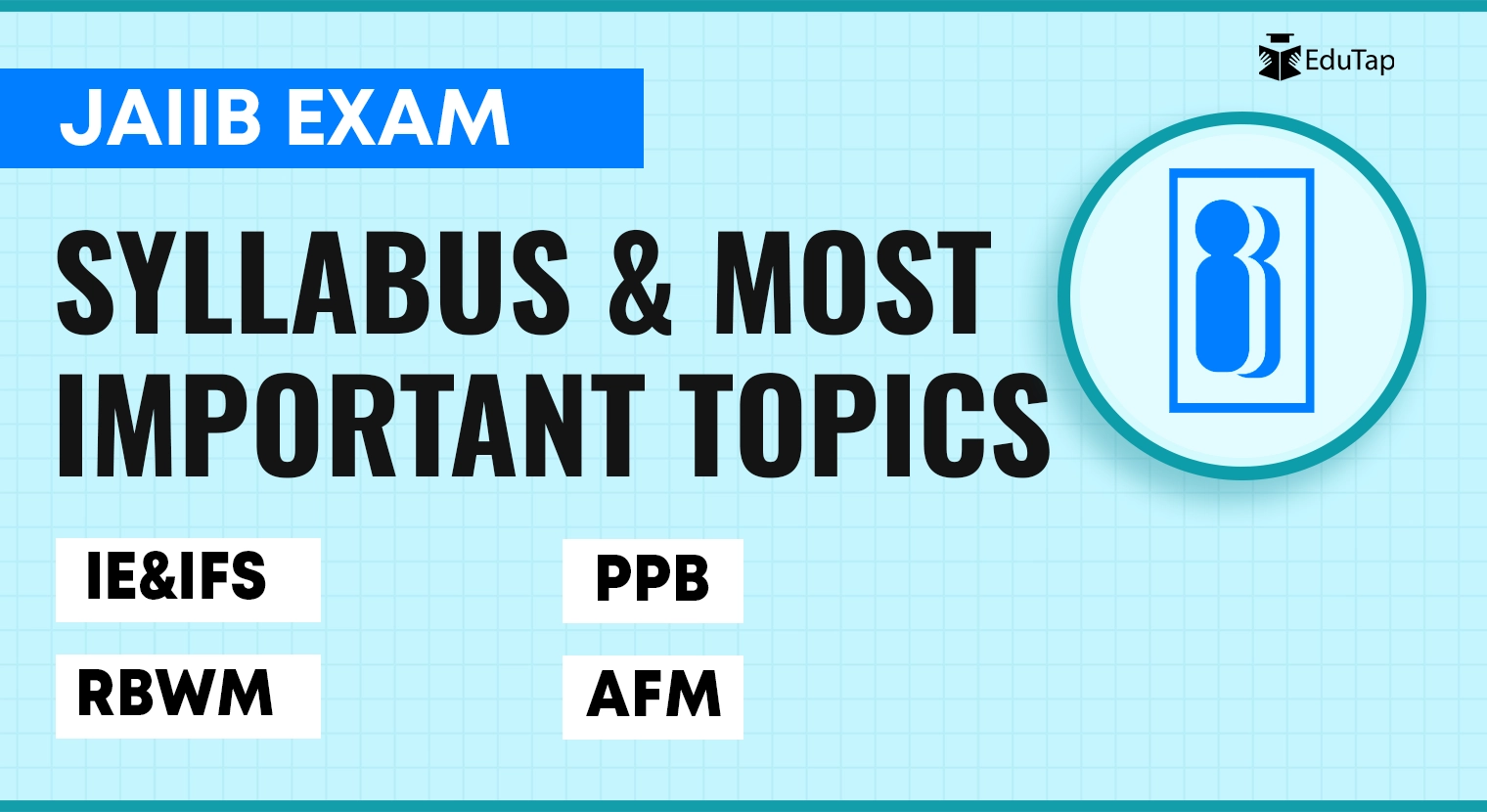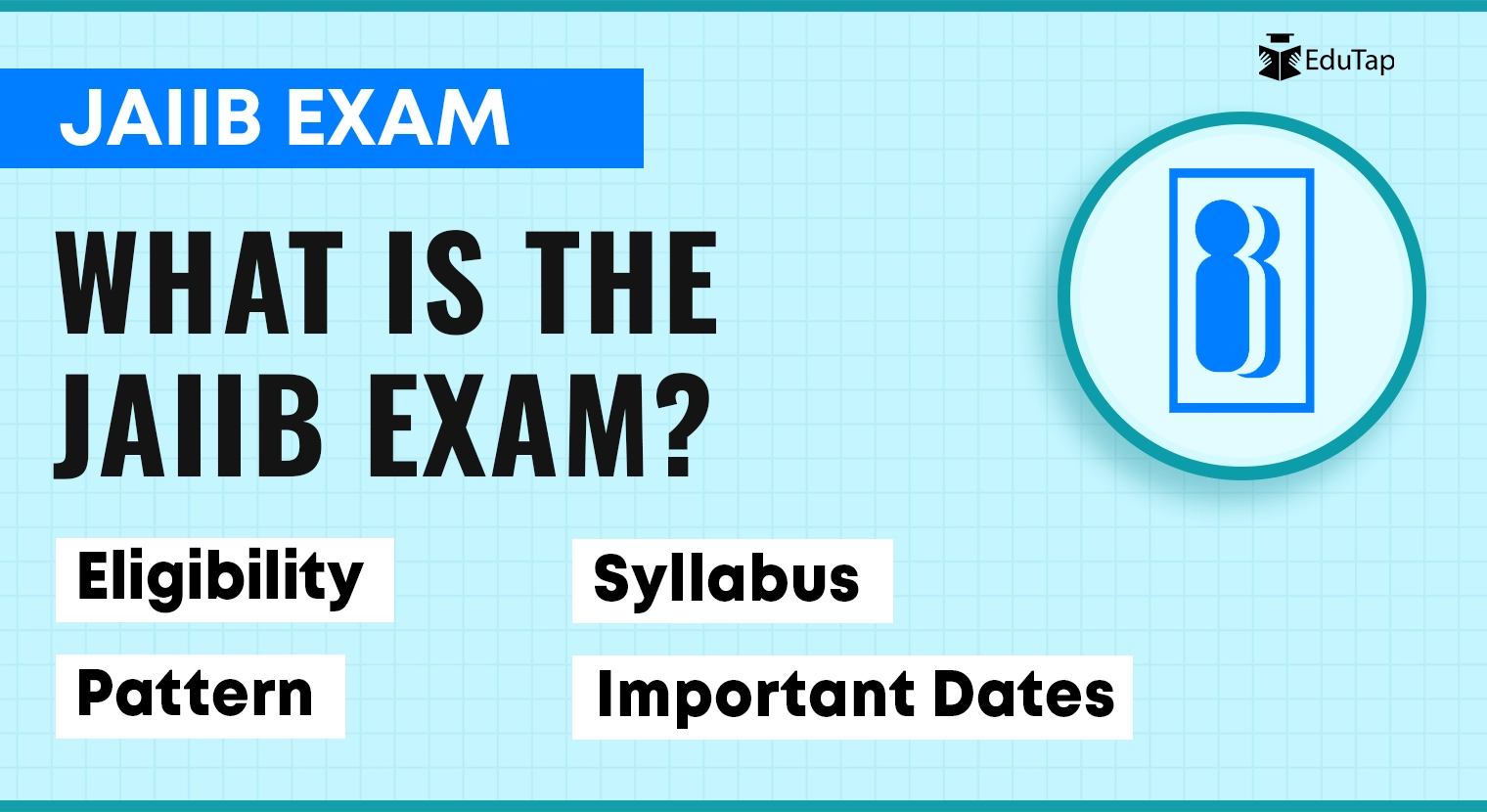If you intend to take the JAIIB (Junior Associate of the Indian Institute of the Bankers) exam, analysing the previous years’ questions can be a wise decision. The solved previous years’ question papers of JAIIB allows you to get an insight into the exam which can help you in strategizing your preparation.
JAIIB Exam Previous Years Questions
Understanding JAIIB’s previous years’ questions is one of the most effective ways to prepare for the exam. It provides a valuable glimpse into the exam’s pattern, important topics, and difficulty level. Analysing these solved previous years’ question papers can help aspirants fine-tune their preparation strategies and identify areas that require more focus.
Here is the list of the component-wise JAIIB previous years’ questions with answer keys in a PDF format:
| JAIIB Exam Previous Years Questions with Answers (PDF) | ||
| SNo. | Component-Wise JAIIB PYQs | Download Link |
| 1 | Indian Economy and Indian Financial System (IE&IFS) PYQs | Download as PDF |
| 2 | Principles and Practices of Banking (PPB) PYQs | Download as PDF |
| 3 | Accounting & Financial Management for Bankers (AFM) PYQs | Download as PDF |
| 4 | Retail Banking and Wealth Management (RBWM) PYQs | Download as PDF |

JAIIB Exam Pattern
Here’s a detailed overview of the JAIIB exam pattern:
| SNo. | Papers | No. of Questions | Total Marks | Time Duration |
| 1 | Paper 1: Indian Economy and Indian Financial System (IF and IFS) | 100 | 100 | 2 hours |
| 2 | Paper 2: Principles and Practices of Banking (PPB) | 100 | 100 | 2 hours |
| 3 | Paper 3: Accounting & Financial Management for Bankers (AFM) | 100 | 100 | 2 hours |
| 4 | Paper 4: Retail Banking and Wealth Management (RBWM) | 100 | 100 | 2 hours |

JAIIB Exam Pattern: Other Details
The JAIIB Exam is held online, and the type of questions are multiple-choice. Each paper carries 100 marks, and there is no negative marking for wrong answers. Each paper is held on different dates, and the duration for each paper is 2 hours. The cut-off for each paper is 50%, i.e., 50 marks out of 100. There are 50 questions of 0.5 marks, 25 of 1 mark, and 25 of 2 marks.
For your easy understanding, we have provided the above-mentioned information in a table form below.
| Other Details of the JAIIB Exam Pattern | |
| Total Marks | 400 |
| Negative Marking | No negative marking |
| Marking Scheme | 50 questions of 0.5 marks25 questions of 1 mark25 questions of 2 marks |
| Mode | Online |
| Nature | Objective (MCQs) |
| Cut-Off Marks | 50 marks out of 100 (for each subject) |
Having acquainted yourself with the JAIIB exam pattern, let’s explore its syllabus to prepare effectively.
Important Note:
JAIIB Exam Syllabus
The JAIIB exam syllabus consists of four papers, each further divided into four modules. The detailed JAIIB exam syllabus is explained below:
| Papers | Modules | Syllabus |
| Paper 1: Indian Economy and Indian Financial System (IE&IFS) | Module A | Indian Economic Architecture |
| Module B | Economic Concept Related to Banking | |
| Module C | Indian Financial Architecture | |
| Module D | Financial Products and Services | |
| Paper 2: Principles and Practices of Banking (PPB) | Module A | General Banking Operations |
| Module B | Functions of Banks | |
| Module C | Banking Technology | |
| Module D | Ethics in Bank & Financial Institutions | |
| Paper 3:Accounting & Financial Management for Bankers (AFM) | Module A | Accounting Principles and Processes |
| Module B | Financial Statement and Core Banking Systems | |
| Module C | Financial Management | |
| Module D | Taxation and Fundamental of Costing | |
| Paper 4: Retail Banking and Wealth Management (RBWM) | Module A | Retail Banking |
| Module B | Retail Products and Recovery | |
| Module C | Support Services – Marketing of Banking Services/Products | |
| Module D | Wealth Management |
JAIIB PYQ Analysis
Here is the subject-wise PYQ analysis of the JAIIB exam:
JAIIB IE&IFS PYQs Analysis
We have analysed the previous year’s questions of IE&IFS to help you understand its difficulty level, important modules, etc. Here is our analysis:
- The difficulty level of the JAIIB IE&IFS paper was between moderate to difficult.
- The paper was lengthy as statement-based questions were asked, which took time to solve.
- Conceptual and odd-one-out types of questions were asked.
- A few numerical questions were also asked from topics such as the Consumer Price Index.
- Maximum questions were asked from Module D.
JAIIB IE&IFS Most Important Topics
Based on our analysis, here are the most important topics for the JAIIB IE&IFS paper.
1. Module A: Indian Economic Architecture
| Module A: Indian Economic Architecture | ||
| SNo. | Chapters | Topics |
| 1 | An Overview of the Indian Economy | Basic Characteristics of Indian Economy – World Bank Classification Economy till 2008 & after 2008 – Hindu Rate & Growth |
| 2 | Sectors of the Indian Economy | Role & Importance of Primary, Secondary & Tertiary Sector Sunrise Sector of Indian Economy |
| 3 | Economic Planning in India and NITI Aayog | Five Years Plans in India NITI Aayog – Strategy for New India @ 75 |
| 4 | Role of Priority Sector and MSME in the Indian Economy | List of Priority Sectors Identified in India & PSL Targets |
| 5 | Infrastructure including Social Infrastructure | Energy Power, Transport system viz., Rail, Road, Civil Aviation – Initiative given |
| 6 | Economic Reforms | Economic Transformation – Financial Sector – Narasimham Committee |
| 7 | Foreign Trade Policy, Foreign Investments, and Economic Development | FDIs, FIIS, and Recent Trends |
| 8 | Climate Change, Sustainable Development Goals (SDGs) | India’s progress in SDGs, including Climate change, CSR Activities – Initiatives, CoP 26, CSR |
2. Module B: Economic Concepts Related to Banking
| Module B: Economic Concepts Related to Banking | ||
| SNo. | Chapters | Topics |
| 1 | Fundamentals of Economics, Microeconomics, Macroeconomics, and Types of Economies | Economics – An Introduction – The Three Definitions |
| 2 | Supply and Demand | Forces Behind the Demand Curve |
| 3 | Money Supply and Inflation | Money Supply – Measures, Money Multiplier, Velocity, Characteristics of Currency Measures of Inflation – CPI, WPI, GDP Deflator |
| 4 | Theories of Interest | Keynes’ Liquidity Preference Theory of Rate of Interest Effect of Fiscal and Monetary |
| 5 | Business Cycles | Characteristics of a Business Cycle |
| 6 | Monetary Policy and Fiscal Policy | GDP and Related Concepts Utility |
| 7 | National Income and GDP Concepts | FDIs, FIIS, and Recent Trends |
| 8 | Union Budget | Expenditure & Receipts |
3. Module C: Indian Financial Architecture
| Module C: Indian Financial Architecture | ||
| SNo. | Chapters | Topics |
| 1 | Indian Financial System – An overview | Phase I & II: Bank Nationalisation |
| 2 | Indian Banking Structure | Types of Banks |
| 3 | Banking Regulation Act, 1949 and RBI Act, 1934 | RBI Act, 1934 – Paid-up Capital and Board of Directors Banking Regulation Act, 1949 |
| 4 | Development Financial Institutions | Evolution of DFIs National Bank for Financing Infrastructure and Development (NaBFID) |
| 5 | Micro Finance Institutions | Evolution of Microfinance in India and PSL norms SHG-Bank Linkage |
| 6 | Non-Banking Financial Companies | NBFS Definition and types |
| 7 | Insurance Companies | Privatisation and Foreign Direct Investment (FDI) in Insurance Sector |
| 8 | Reforms & Developments in the Banking Sector | Bad Bank |
4. Module D: Financial Products and Services
| Module D: Financial Products and Services | ||
| SNo. | Chapters | Topics |
| 1 | Overview of Financial Markets | Price Discovery |
| 2 | Money Markets and Capital Markets | Notice Money and Term Money Repo, LTRO, TLTRO |
| 3 | Fixed Income Markets – Debt/Bond Markets | Bond Valuation and Theorems Derivatives Association of India RBI Retail Direct Scheme (RDS) |
| 4 | Forex Markets | Foreign Exchange Management Act (FEA), 1999 |
| 5 | Interconnection of various markets/Market Dynamics | Asian Clearing Union |
| 6 | Merchant Banking Services | Definition and SEBI Regulations |
| 7 | Factoring, Forfaiting & TreDS | Definition & Types |
| 8 | Venture Capital | Concept of Venture Capital, Stages & Exit routes |
| 9 | Leasing and Hire Purchase | Definition, Types, and Parties Involved |
| 10 | Credit Rating Agencies and Their Functions | Credit Rating Agency (CRAs) – Definition & History |
| 11 | Insurance Products & Ch43. Pension Funds (include APY, NPS) | Government Products – Insurance (PMJJBY, PMSBY) & Pension (APT, PPF, NPS) |
| 12 | Real Estate Investment Funds/ Infrastructure Investment Fund | REITs & InvITs – Definition & Types |
After analysing paper 1, IE&IFS, and getting familiar with its important topics, let’s take a look at the PPB PYQs analysis and understand the important questions for paper 2.
JAIIB PPB PYQs Analysis
We have analysed the previous year’s questions of PPB to help you understand its difficulty level, important modules, etc. Here is our analysis:
- The paper’s difficulty level was moderate.
- Maximum questions could be easily solved by using the option elimination method.
- The majority of the questions were asked from Modules A and B.
JAIIB PPB Most Important Topics
Based on our analysis, here are the most important topics for the JAIIB PPB paper.
1. Module A: General Banking Operations
| Module A: General Banking Operations | ||
| SNo. | Chapters | Topics |
| 1 | Banker-Customer Relationship | Banker-Customer Relationship |
| 2 | AML-KYC Guidelines | PMLA, Reporting Obligations |
| 3 | Operational Aspects of KYC | KYC-Individuals |
| 4 | Opening A/C of Various types of Customers | Individuals, KJoint, Illiterate, Blind, Minor, Partnership, LLP |
| 5 | Operational Aspects ofDeposit A/Cs | Operational Instructions in Joint Accounts, Attachment Orders |
| 6 | Operational Aspects of Handling Cash | CTS |
| 7 | Banker’s Special Relationship | Mandate, POA, Lien, Appropriation |
| 8 | Dorex Remittance Facilities for Individuals | LRS, Outward Remittances |
| 9 | Aspects of NRI Business | NRE, NRO, FCNR, SNRR |
| 10 | Foreign Currency A/Cs for Residents | Foreign Currency Denomination A/Cs |
| 11 | Payment and collection of Cheques and other Negotiable Instruments | NIA, Paying & Collecting Bank Duties, Endorsement, Crossing, and Dishonour |
| 12 | Ancillary Services | Demand Draft Locker |
| 13 | Duties & Rights of a Banker and Customer | Termination of BCSBI Codes |
| 14 | Grievance Redressal & RBI Integrated Ombudsman Scheme | Ombudsman Scheme |
| 15 | The Consumer Protection Act, 2019 | Product Liability, Councils, Commissions |
| 16 | Right to Information Act, 2005 | PIOs, Anneals, Public Authority |
2. Module B: Functions of Banks
| Module B: Functions of Banks | ||
| SNo. | Chapters | Topics |
| 1 | Principle of Lending | Types of Borrowers, Credit facilities |
| 2 | Appraisal & Assessment of Credit Facilities | Only Definitions |
| 3 | Operational Aspects of Loan Accounts | Common Loan Products |
| 4 | Types of Collaterals & Their Characteristics | Immovable Property, LTV ratios, nature of charge created |
| 5 | Different Modes of Charging Securities | Full Chapter |
| 6 | NPAs/Stressed Assets | Asset classification, SMA, Wilful Defaulters (Table) |
| 7 | Important Laws Relating to Recovery of Dues | Basics of Acts |
| 8 | Contracts of Guarantee | Types of Guarantee |
| 9 | Contract of Indemnity | Full Chapter |
| 10 | Letters of Credit | Types, Documents |
| 11 | Laws Relating to Bill Finance | Classification of Bills |
| 12 | Priority Sector Advances | Targets/Sub-Targets & Categories |
| 13 | Agricultural Finance | KCC, PMFBY, MSP |
| 14 | MSMEs in India | Classification, TreDS, PM savNIDHI |
| 15 | Government Sponsored Scheme | In News |
| 16 | GHGs | Full Chapter |
3. Module C: Banking Technology
| Module C: Banking Technology | ||
| SNo. | Chapters | Topics |
| 1 | Essential of Bank Computerisation | Networking Technology, definitions |
| 2 | ADC-Digital Banking | ATM, Electromagnetics Cards, Net Banking |
| 3 | Data Communication Network and EFT Systems | NEFT, RTGS, SWIFT, Definitions |
| 4 | Digital Payment System – NPCI | Full Chapter |
| 5 | Technology Trends in Banking | AI, Chatbots, Blockchains, Crypto, VR, AR, 5G |
| 6 | Security Considerations | Vising, Smishing, Malware, Phishing |
4. Module D: Ethics in Banking & Financial Institutions
| Module D: Ethics in Banking & Financial Institutions | ||
| SNo. | Chapters | Topics |
| 1 | Ethics, Business Ethics & Banking | Ethics & Value |
| 2 | Ethics at Individual Level | Golden Rule, Ethical Dilemmas |
| 3 | Ethics Dimensions – Employees | Insider Trading, Job discrimination |
| 4 | Work Ethics and the Workplace | Whistleblowing |

After analysing paper 2, PPB, and getting familiar with its important topics, let’s take a look at the AFM PYQs analysis and understand the important questions for paper 3.
JAIIB AFM PYQs Analysis
We have analysed the previous year’s questions of AFM to help you understand its difficulty level, important modules, etc. Here is our analysis:
- The paper’s difficulty level was moderate.
- Numericals were asked from simple topics such as cash flow, depreciation, etc., and there were no numericals from forex arithmetic, bond value, and interest.
- There were lots of conceptual questions from Modules A and D.
- No questions were asked from the topic—Financial Statements of Banking Companies.
JAIIB AFM Most Important Topics
Based on our analysis, here are the most important topics for the JAIIB AFM paper.
1. Module A: Accounting Principles & Processes
| Module A: Accounting Principles & Processes | ||
| SNo. | Chapters | Topics |
| 1 | Definition, Scope, and Accounting Standards, including IndAS | Accounting Standards |
| 2 | Basic Accountancy Procedures | Concepts of Accountancy |
| 3 | Maintenance of Cash/Subsidiary Books and Ledger | Rules of Debit & Credit |
| 4 | Bank Reconciliation Statement | Bank Reconciliation Statement |
| 5 | Trial Balance, Rectification of Errors and Adjusting & Closing Entries | Types of Errors & Suspense Accounts |
| 6 | Depreciation & its Accounting | Different Methods of Depreciation |
| 7 | Capital & Revenue Expenditure | Examples of Capital & Revenue Expenditure |
| 8 | Bills of Exchange | Important Terms Related to Bills of Exchange |
| 9 | Back Office Functions/Handling Unreconciled Entries in Banks | Reconciliation of Inter Branch/Office Entries |
| 10 | Bank Audit & Inspection | Types of Bank Audits & Their Details |
2. Module B: Financial Statement and Core Banking Systems
| Module B: Financial Statement and Core Banking Systems | ||
| SNo. | Chapters | Topics |
| 1 | Preparation of Final Accounts | Preparation of Balance Sheet and Profit & Loss Account |
| 2 | Company Accounts – I | Definition & Types of Companies |
| 3 | Company Accounts – II | Form of Balance Sheet |
| 4 | Cash Flow & Funds Flow | Components of Cash Flow |
| 5 | Final Accounts of Banking Companies | Preparation of Final Systems & Disclosure Requirements |
| 6 | Core Banking Systems & Accounting in Computerised | Terms, Advantages & Disadvantages of Computerised Accounting |
3. Module C: Financial Management
| Module C: Financial Management | ||
| SNo. | Chapters | Topics |
| 1 | Financial Management – An Overview | Principles, Risk Return Trade-Off, Ethics & Social Responsibility |
| 2 | Ratio Analysis | Different Types of Ratios |
| 3 | Financial Mathematics – Calculation of Interest and Annuities | Calculation of Simple & Compound Interest and Definition of Annuities |
| 4 | Financial Mathematics – Calculation of YTM | Bond Theorems, Bond Price Volatility |
| 5 | Capital Structure & Cost of Capital | Approaches and Weighted Average Cost of Capital |
| 6 | Equipment Leasing/Lease Financing | Types of Leases |
| 7 | Working Capital Management | Working Capital Cycle |
| 8 | Derivatives | Types of Derivatives |
4. Module D: Taxation & Fundamentals of Costing
| Module D: Taxation & Fundamentals of Costing | ||
| SNo. | Chapters | Topics |
| 1 | Taxation: Income Tax/TDS/Deferred Tax | TCS, TDS, and Deductions |
| 2 | An Overview of Cost & Management Accounting | Methods & Significance of Cost & Management Accounting |
| 3 | Costing Methods | Applications of Costing Methods |
| 4 | Standard Costing | Applications of Standard Methods |
| 5 | Marginal Costing | Profit Volume Ratio & its Significance |
| 6 | Budget & Budgetary Control | Types of Budget |
After analysing paper 3, AFM, and getting familiar with its important topics, let’s take a look at the AFM PYQs analysis and understand the important questions for paper 4.
JAIIB RBWM PYQs Analysis
We have analysed the previous year’s questions of RBWM to help you understand its difficulty level, important modules, etc. Here is our analysis:
- The difficulty level of this paper was moderate.
- There were in-depth questions asked from Module B.
- There were 2 case studies in the paper.
After analysing the questions in the previous AFM paper, we identified the most important topics from each module.
JAIIB RBWM Most Important Topics
Based on our analysis, here are the most important topics for the JAIIB RBWM paper.
1. Module A: Retail Banking
| Module A: Retail Banking | ||
| SNo. | Chapters | Topics |
| 1 | Retail Banking: Introduction | Characteristics, advantages, and constraints in Retail Banking |
| 2 | Retail Banking: Role within the Bank Operations | Business Models |
| 3 | Applicability of Retail Banking Concepts and Distinction between Retail and Corporate/Wholesale Banking | Distinction between Retail and Corporate/ Wholesale Banking |
| 4 | Branch Profitability | Categories of Profit, Return on Asset, Return on Equity, Branch Operating Efficiency, Factors affecting profitability |
2. Module B: Retail Products and Recovery
| Module B: Retail Products and Recovery | ||
| SNo. | Chapters | Topics |
| 1 | Customer Requirements | Maslow’s Theory |
| 2 | Product Development Process | Product Life Cycle, Debit or Credit Products, Third Party Products, Product Management |
| 3 | Credit Scoring | Credit Scoring Model, Credit Information Companies in India, Issues in Credit Scoring |
| 4 | Important Retail Liability Products | Types of deposits |
| 5 | Important Retail Asset products | PMAY, Types of Loans |
| 6 | Credit and Debit Cards | Co-Branded Cards |
| 7 | Remittance Products | NEFT, RTGS, ECS, NACH, BBPS, AePS |
| 8 | Digitisation of Retail banking Products | IDRBT, INFINET, SFMS, ISCC, NFS |
| 9 | Role of AI and Technology in Retail Banking Products | Benefits of AI in Retail Banking |
| 10 | Recovery of Retail Loans | SARFAESIAct, DRT, Lok Adalat |
| 11 | Management Information Systems | Role of MIS in Banking Industry |
| 12 | Securitisation | Securitisation of Assets |
3. Module C: Support Services – Marketing of Banking Services/Products
| Module C: Support Services – Marketing of Banking Services/Products | ||
| SNo. | Chapters | Topics |
| 1 | Marketing: An Introduction | Marketing Mix |
| 2 | Delivery Channels in Retail Banking | Channel Experience, Internet Banking |
| 3 | Delivery Models | Direct Selling Agents, Dedicated Marketing Managers |
| 4 | Customer Relationship Management in Retail Banking | Implementation of Process of CRM, Benefits of CRM |
| 5 | Service Standards for Retail Banking | BCSBI Customer Grievance Handling |
| 6 | Marketing Information System: A Longitudinal Analysis | Functions of MKIS |
4. Module D: Wealth Management
| Module D: Wealth Management | ||
| SNo. | Chapters | Topics |
| 1 | Importance of Wealth Management | Instruments of Wealth Management |
| 2 | Investment Management | Portfolio Management |
| 3 | Tax Planning | All Topics |
| 4 | Other Financial Services Provided by Banks | All Topics |

Conclusion
Analysing the JAIIB previous years’ questions is a strategic move for aspirants to gain valuable insights into the paper. The solved JAIIB PYQs allow you to understand question patterns, important topics, and the difficulty level of the paper. Analysing and understanding these PYQs allows you to tailor your exam strategies and adjust your approach for maximum efficiency.
FAQs
Yes, analysing PYQs can help you understand the exam pattern, syllabus, and difficulty level of the question asked. This information helps in refining your preparation and mastering important topics that ultimately help you score better in the JAIIB exam.
No, only PYQs are not sufficient for your JAIIB preparation. PYQs should be supplemented with comprehensive study materials, an understanding of concepts, and regular practice to ensure a well-rounded preparation for the JAIIB exam.
On average, dedicating 2 hours daily for 1.5 months per subject is a good preparation strategy for JAIIB. However, keep in mind that this is a general estimate and can vary based on individual strengths and weaknesses.
While exact questions may not repeat, practising PYQs familiarises you with the question format and helps you anticipate the types of questions likely to be asked.





